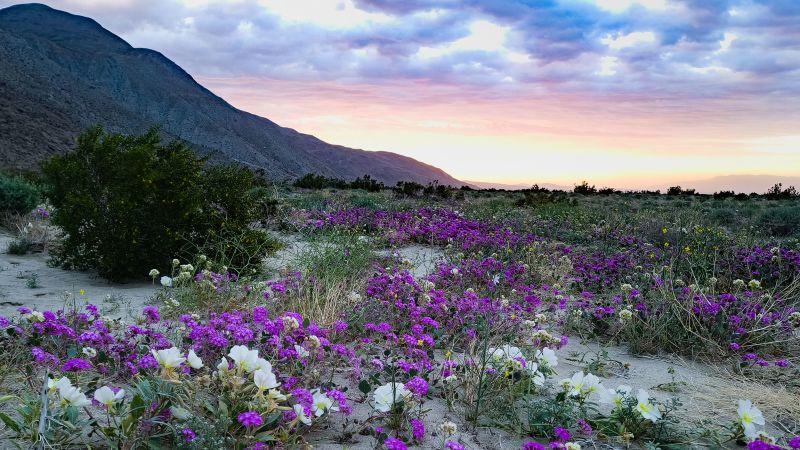California is on the brink of a vibrant wildflower display thanks to ample winter rain, setting the stage for a stunning spring showcase.
According to wildflower experts interviewed by CNN, a superbloom, characterized by an abundant and vivid array of wildflowers blooming simultaneously, is anticipated this season. The spectacle has already begun unfolding, heralding a promising start.
Evan Meyer, a botanist and the Executive Director of the Theodore Payne Foundation, expressed optimism about the upcoming season, noting the early signs of a beautiful bloom in parts of Southern California.
The bloom commenced in February in the low elevation deserts of Southern California and is expected to rejuvenate the arid landscape throughout spring, reaching its peak in April in terms of scale and color. Conversely, the neighboring mountains, enveloped in snow and cold conditions until summer, will bloom later.
While the phenomenon is not exclusive to California, with Arizona and Nevada also witnessing wildflower displays, the most dense and spectacular blooms are typically found in Southern California.
Each year brings a unique wildflower bloom, heavily influenced by winter and spring weather conditions. The abundance and timing of the bloom are unpredictable, making it uncertain whether this year’s display will rival the previous year’s remarkable bloom.
Despite the unpredictability, Meyer remains hopeful for another magnificent superbloom following the wet winter. The wildflowers rely on substantial water to bloom profusely, a requirement that was met this winter in Southern California.
Already, California’s Anza-Borrego Desert State Park, Chino Hills State Park, and Tule Elk State Natural Reserve have burst into vibrant hues of purples, yellows, greens, and whites, transforming the once dry landscapes.
However, the wildflowers are delicate and sensitive to weather fluctuations. Therefore, it is advisable to seize the opportunity to witness these blooms as they are contingent on the “Goldilocks zone” of rainfall and temperature for their sustenance.
Continued heavy rain in the upcoming months could pose challenges for the wildflowers, as extreme temperatures can abruptly end a bloom within days. Moreover, the looming threat of climate change, leading to more frequent weather extremes, adds an additional layer of uncertainty to future blooms.
In exceptionally wet years, non-native invasive plants can encroach on the territory of native wildflowers, such as the California poppy, competing for space and resources. The presence of individual poppies in the Antelope Valley reserve hints at a potential bloom, though the outcome remains uncertain due to the record rainfall earlier this year.
Human activities also impact the survival of wildflowers. Visitors to California parks are urged to tread lightly on designated trails to preserve the delicate ecosystem. Picking wildflowers is strongly discouraged to ensure their longevity and the continuity of blooms in the future.
Beneath the vibrant facade of wildflowers lies a profound beauty. Meyer highlights the significance of the billions of seeds being produced during this period, emphasizing the interconnectedness and inspiration derived from observing these natural systems.
The anticipation of a superbloom in California serves as a reminder of the delicate balance between nature’s resilience and vulnerability, urging us to cherish and protect these fleeting yet magnificent displays.
